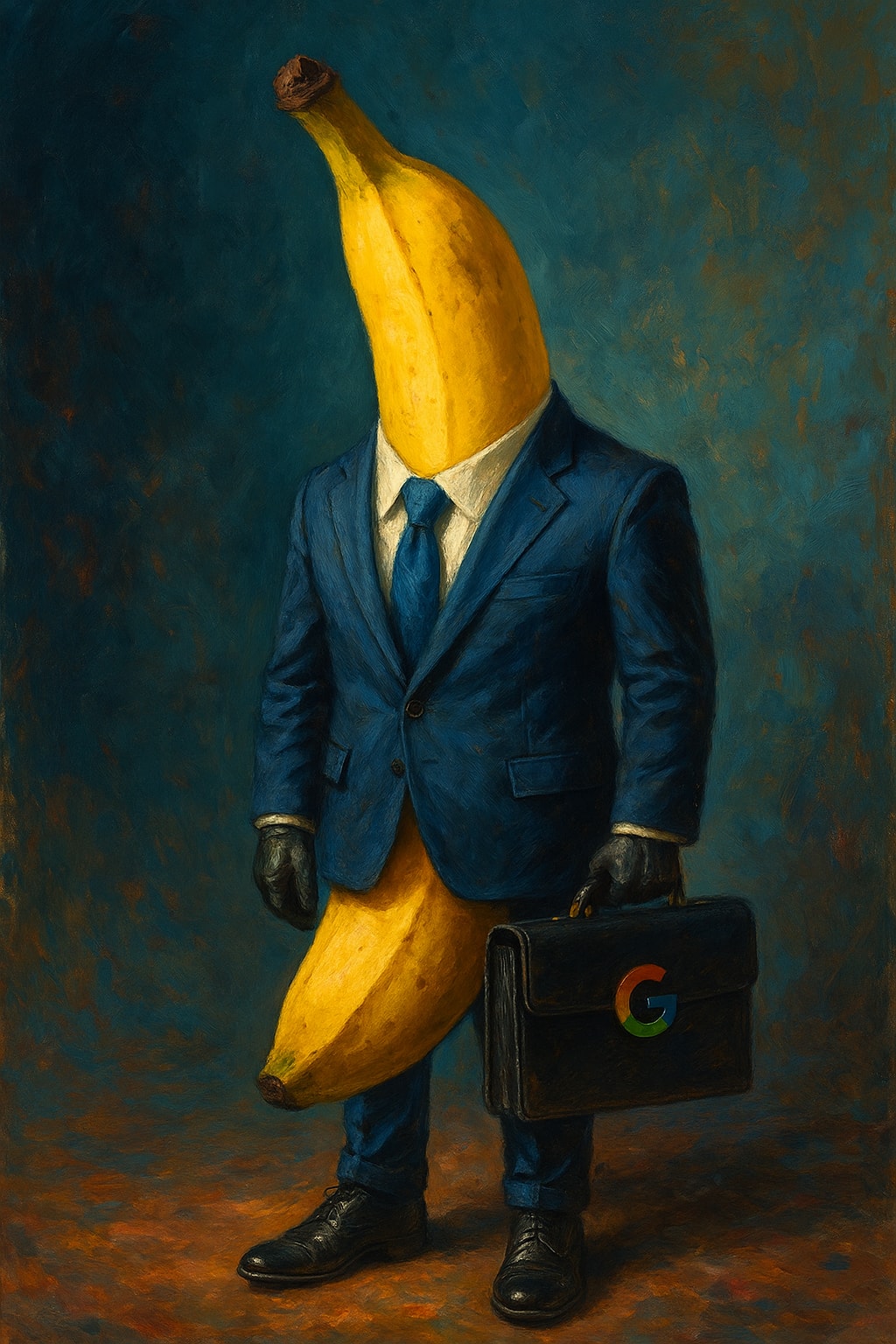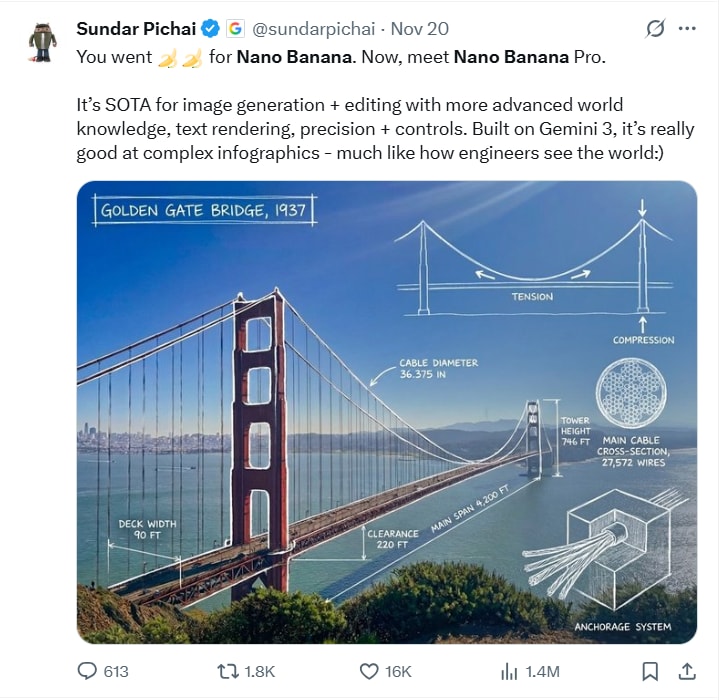It’s Google’s world, we’re just generating in it. The phoenix that rose from the ashes of “Bard” is now doing victory laps around the stadium, waving a fruit-shaped baton called Nano Banana Pro.
Hot on the heels of Gemini 3, Google has released an image model that fixes the three cardinal sins of AI imagery:
the text looks like a ransom note
the images hallucinate
they’re pretty but useless in actual workflows
Nano Banana Pro goes right at all of it:
1. Text That Doesn’t Look Like a Cry for Help
Historically, asking an AI model to write “Sale 50% Off” inside an image produced “Sdlq 50% 0ff.” Nano Banana Pro finally fixes this with clean, legible text, multi-language typography, and diacritics that don’t look like accidental sprinkles. This one upgrade alone unlocks ads, posters, explainers, product shots, social campaigns - actual commercial use, not just digital doodles.
2. Consistency by Design: From Concept to Campaign
Nano Banana Pro finally cracks the hardest part of visual storytelling - consistency. You can blend more elements than ever before - up to 14 reference images, maintaining the look and resemblance of up to 5 people. You can go from sketch to product render, blueprint to 3D photorealism, or moodboard to campaign - all while preserving your brand’s visual DNA. We’ve moved from “generate a pretty picture” to “generate a coherent campaign.”
That’s a multi-billion-dollar capability hiding inside a name that sounds like a smoothie.
3. Higher Resolution + Real-World Knowledge = The Infographic OS
Working in 2K/4K and built atop Gemini 3 Pro, Nano Banana Pro can render infographics with factual grounding - pulling live data from Search, embedding real information, and updating as the world changes.
AI image models historically hallucinated. Google is saying: “What if the model just consulted Search before it drew something?” This flips the entire image-gen paradigm from “creative toy” to “visual knowledge engine.”
This reawakens Google’s core moat - the canonical global database of facts and the crawler that continuously updates it. Google is turning Search from a consumer product into a cognitive substrate for generative models. This may be their most durable long-term moat.
4. The Workflow Invasion
Nano Banana isn’t stopping at image generation - it’s burrowing into the workflow layer.
Slides → “Beautify this slide.”
Vids → “Rewrite the shot list.”
Gemini app → “Make me look like a tiny figurine posed heroically on a banana.”
Vertex AI → “Pipeline this into the enterprise content factory.”
The instinct is to compare Nano Banana to other image models, but the real competition is Canva, Adobe Express, Figma’s creative suite, Notion’s visual tools, and the $300B global marketing-design industry.
5. Watermarking: Where Ethics Meets Economics
On paper, watermarking is a safety feature - a nod to transparency, trust, and regulatory appeasement. In practice, it’s also a business model wearing a halo.
By watermarking free-tier images or “non-licensed” outputs, Google is creating a tiered rights system that maps neatly onto monetization:
Enterprises will feel compelled to pay for the “clean tier”
Consumer content will self-identify as AI-native, which helps Google track usage
Google gets to shape norms around what “professional” AI-generated content looks like
Watermarking doubles up as a pricing strategy and a way for Google to influence the visual economy.
Google isn’t just trying to win the image-model race. They’re trying to win the image-workflow war. That’s the sticky layer where habits form, budgets migrate, and ecosystems entrench.
Nano Banana Pro is Google’s attempt to rebuild the entire global creative-production stack inside its ecosystem - from consumer fun → to creator tooling → to enterprise workflows → to cloud monetization.
And the funniest part? They’re doing it under the cheerful, meme-ready name Nano Banana Pro, because in 2025, even strategic plays need a sense of humor.
.png)






